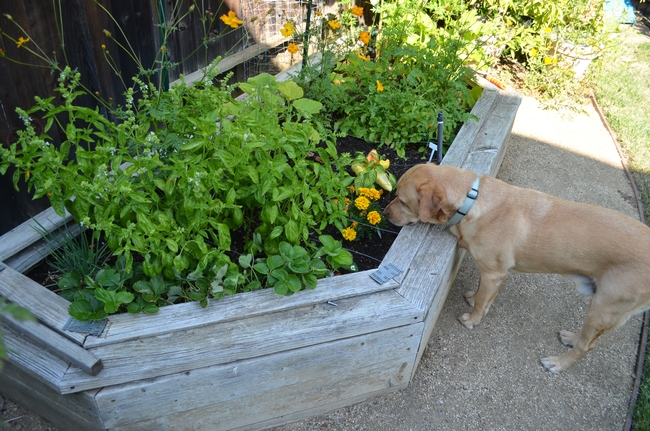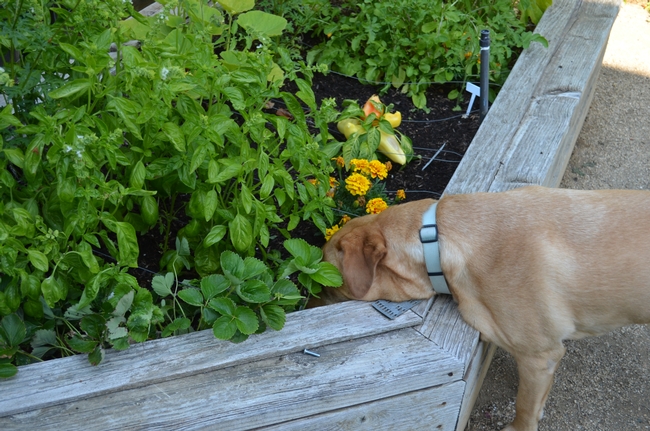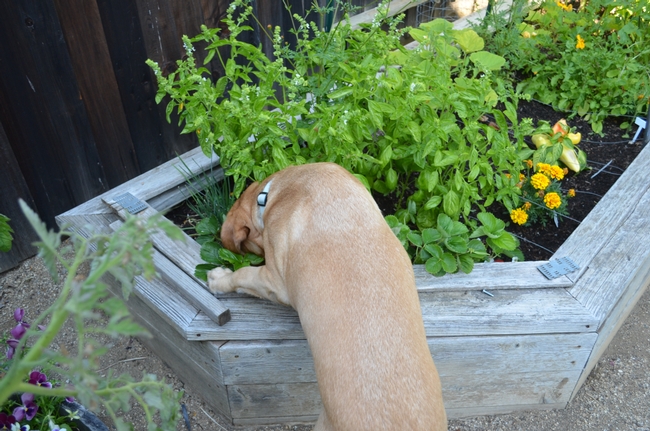New Strawberry Pest
When we first moved to Benicia, our neighbor gave us some strawberry plants to grace our new raised vegetable bed. Since then, I’ve been the only person in the family who picks them (despite having a strawberry-loving son). But this summer, much to my surprise, I learned that I have competition from an unusual strawberry pest.
Although not identified on UC’s Integrated Pest Management website, Labradorus retrievous (var. yellow) is one of the furrier, larger, garden pests. This non-native species, which occurs throughout California, is quadrupedal with a distinctive rudder-like tail. The tail alone can cause considerable damage at peak rotational velocity. Possessing a large blocky head, but lacking antennae, the species has short whiskers to help it evaluate its environment. It seems drawn to human activity and, in particular, round or plush toys. Although some species have subterranean (digging) tendencies, I fortunately have not seen that particular variety in my yard.
I recently observed a particular individual of the species investigate my raised veggie bed, but I really thought nothing of it—even as it placed its forepaws on the edge of the bed and sniffed at the strawberry plants. Then, suddenly, the individual stuck its head deep in the plants, rooted around, and came up with its prize—a ripe red strawberry—that it promptly gulped down.
This would explain my unusually small strawberry crop this season.
I also have seen Labradorus (var. black) carefully stand on two hind legs and delicately pluck blackberries from a bush. Thus, it appears that this particular garden pest has a proclivity for berries of all types. But given the minimal damage that occurs, and the benefits that this particular species of pest brings to the home and garden, little intervention—other than perhaps a fence for the veggie bed—is recommended.

The beginnings of the attack on strawberries. (photos by Erin Mahaney)

Note the technique at which the pest locates the berries.

Ultimately, the strawberry is devoured.


Posted by Launa Herrmann on August 1, 2012 at 9:08 AM